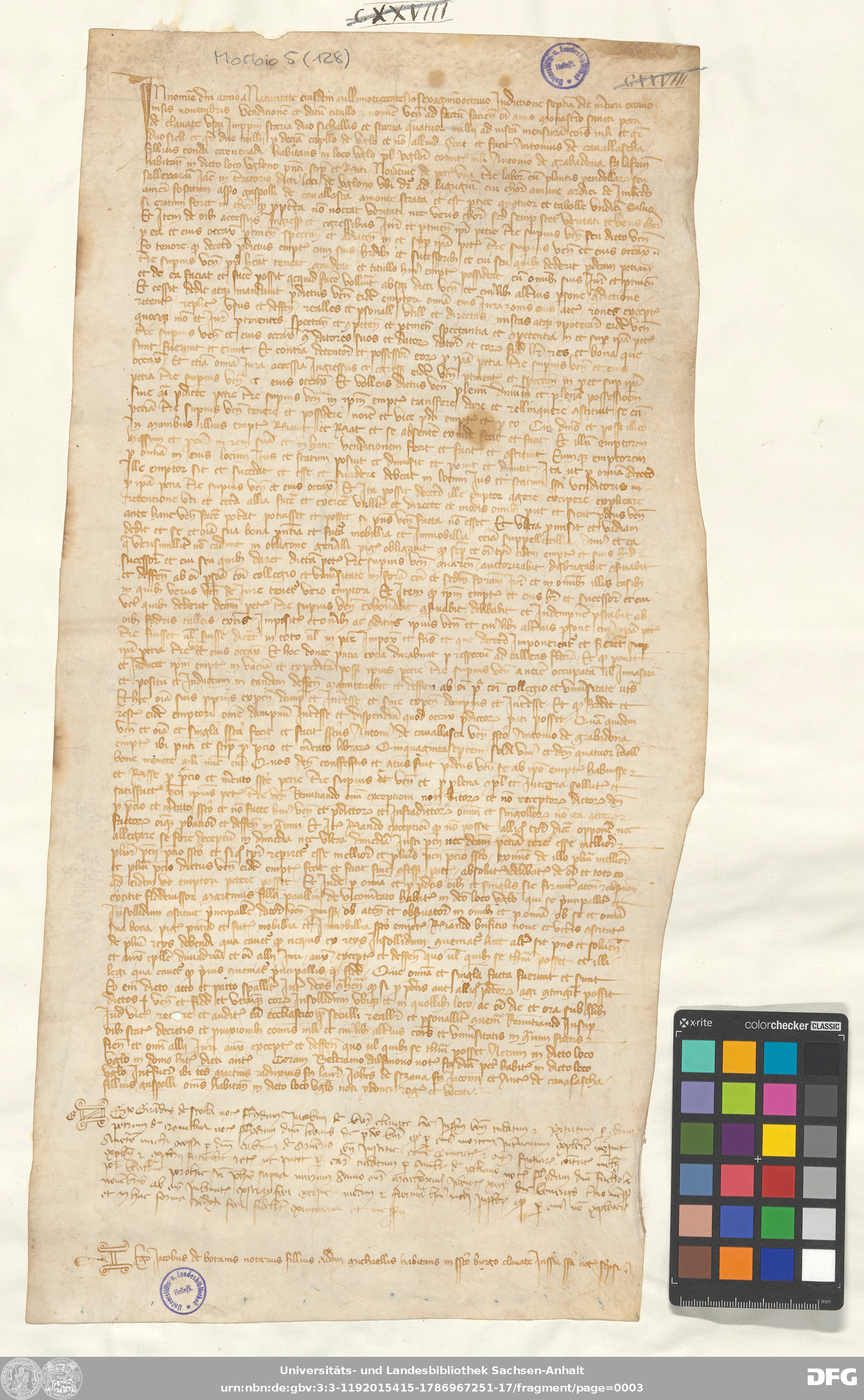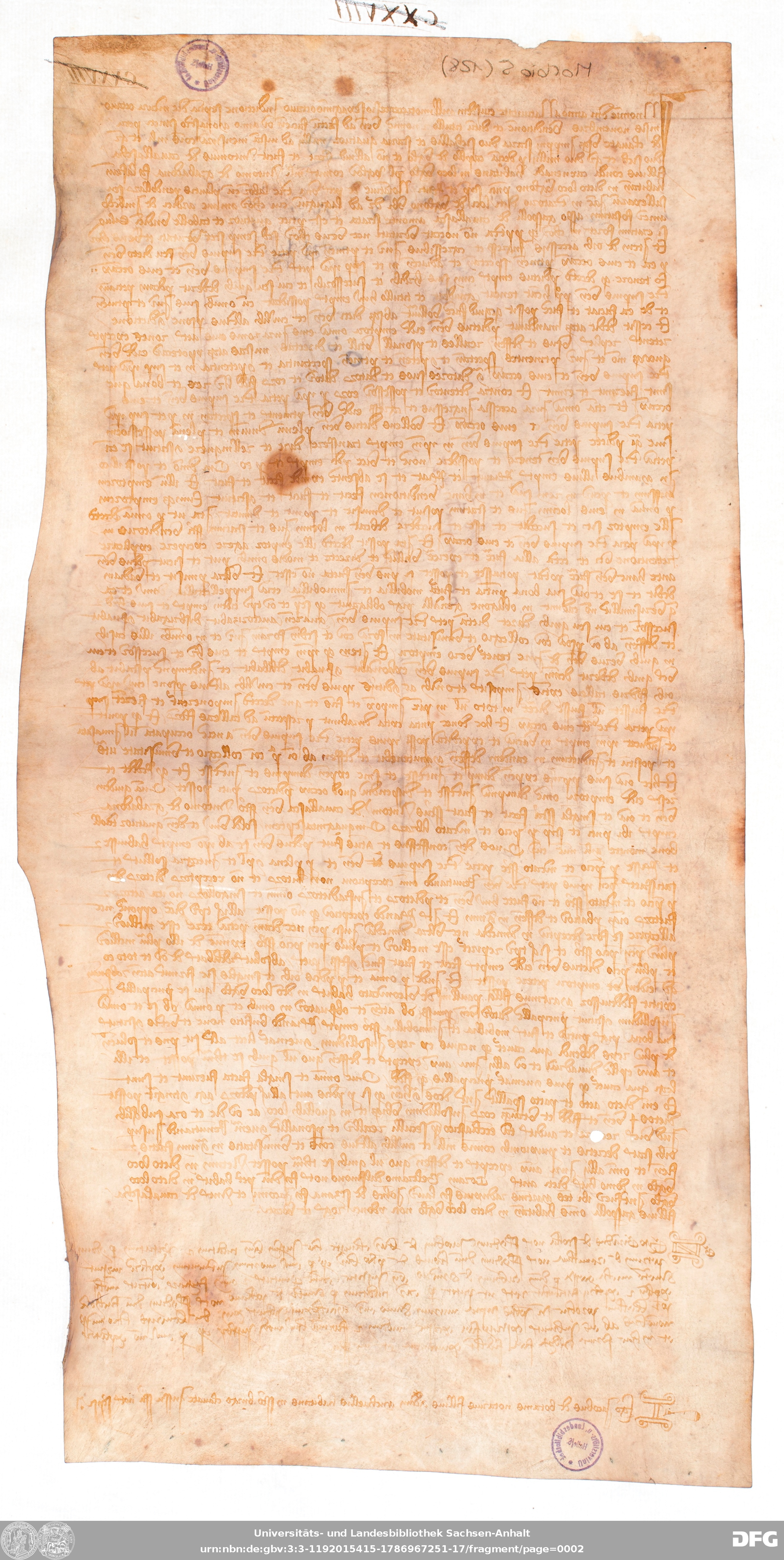Charter: Sammlung Morbio Morbio 5 (128)
Signature: Morbio 5 (128)
Add bookmark
Edit charter (old editor)
1368, in dicto loco Uglono in domo habitantionis dicti
Antonii
Antonius de Caualascha, Sohn des verstorbenen Carneuadus,
wohnhaft in Oggiono, gehörig zur plebs von Oggiono im comitatus Mailand,
verkauft dem Antonius de Grabadona, Sohn des verstorbenen Lafranchus,
wohnhaft ebendort, ein Stück Land in Oggiono, mit dem Abgaben an das
Kloster St. Petri in Civate verbunden sind. Aussteller:
Source Regest:
urn: urn:nbn:de:gbv:3:3-1192015415-1786967251-17
doi: 10.25673/114202
urn: urn:nbn:de:gbv:3:3-1192015415-1786967251-17
doi: 10.25673/114202
Current repository:
Universitäts- und Landesbibliothek Sachsen-Anhalt Halle
Material: Pergament
Dimensions: 1 ungezähltes Blatt, Illustrationen, 47 x 24 cm
Condition: Erhaltungszustand: gut



- Die Illustrationen sind: Initiale, Notarszeichen
Mentions:
- Bognetti-Marcora, Civate, 2. Aufl. 1985, Seite 156
Comment
Handschrift, (DE-588)4023287-6, (DE-627)10457187X, (DE-576)208948376Urkunde, (DE-588)4062132-7, (DE-627)104675098,
(DE-576)209142618
Language:
Places
- in dicto loco Uglono in domo habitantionis dicti Antonii
Persons
- Antonius de Caualascha, Oggiono, Sohn des Carneuadus
- Antonius de Grabadona, Oggiono, Sohn des Lafranchus
- Cabrinus
- Girardus
- Jacobus
- Petrus
Universitäts- und Landesbibliothek Sachsen-Anhalt, Sammlung Morbio Morbio 5 (128), in: Monasterium.net, URL <https://www.monasterium.net/mom/DE-ULBST/Morbio/Morbio_5%28128%29/charter>, accessed 2025-04-21+02:00
You are copying a text frominto your own collection. Please be aware that reusing it might infringe intellectural property rights, so please check individual licences and cite the source of your information when you publish your data
The Charter already exists in the choosen Collection
Please wait copying Charter, dialog will close at success